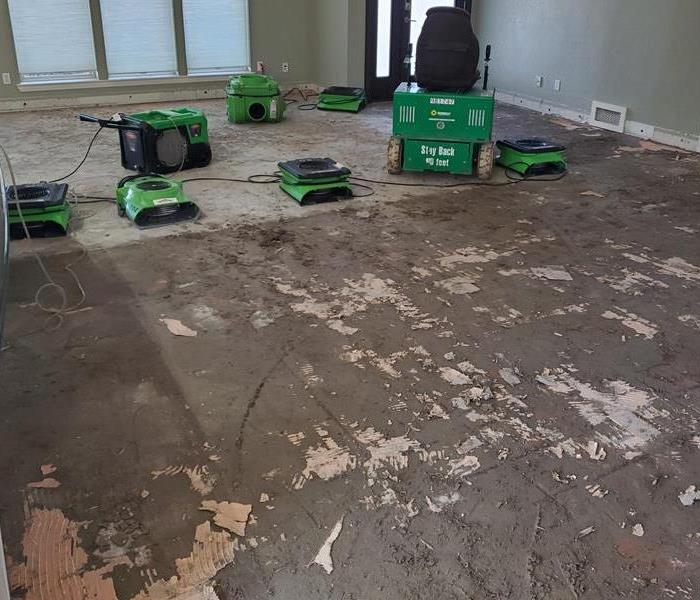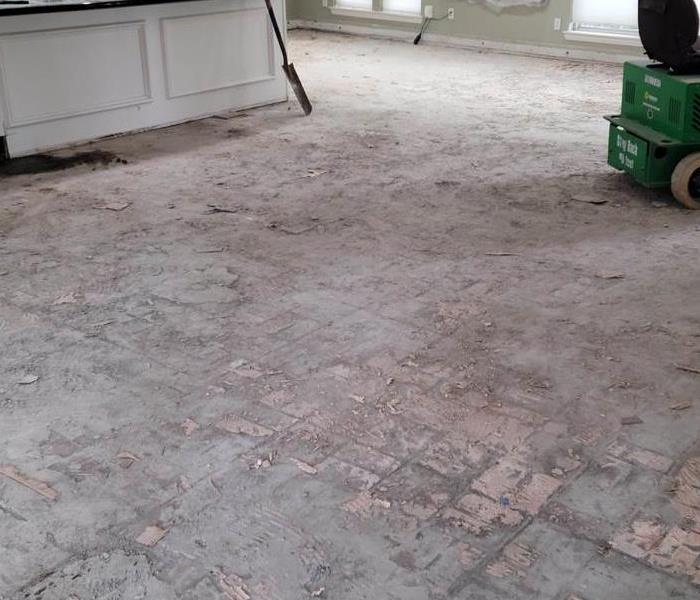
Step 4: Drying and Dehumidification
Our Water Damage Restoration Process
Most buildings are constructed with very porous materials, which means they tend to retain water. If possible, flooring, drywall and wood will be dried to their specific benchmark relative humidity level to ensure that you don’t develop growth, buckling or odor issues. At SERVPRO of Southwest Dallas, we measure the size of the affected area and we check relative humidity along with temperature to determine the correct equipment needed to fully dry your property. During the drying process, we will carefully monitor the moisture levels of all the affected materials to ensure they are dried to the correct standard.
Drying / Dehumidification
Our Professionals will use room measurements, temperature, and relative humidity to determine the optimal number of air movers and dehumidifiers to dry your home or business. We’ll carefully monitor the progress using moisture meters until the materials return to acceptable drying goals.
- Use Dehumidification Equipment
- Use Monitoring Equipment to Track Progress
Monitor Floor and Walls
We check the moisture levels to monitor the drying process.
- Monitor Floors
- Monitor Walls
Drying Equipment
- Industrial-grade dehumidifiers help prevent secondary water damage like swelling and warping of floors, walls, and furniture.
- High-speed air movers create airflow across walls, carpets, pads, and furniture, which accelerates the evaporation of moisture.






 24/7 Emergency Service
24/7 Emergency Service




